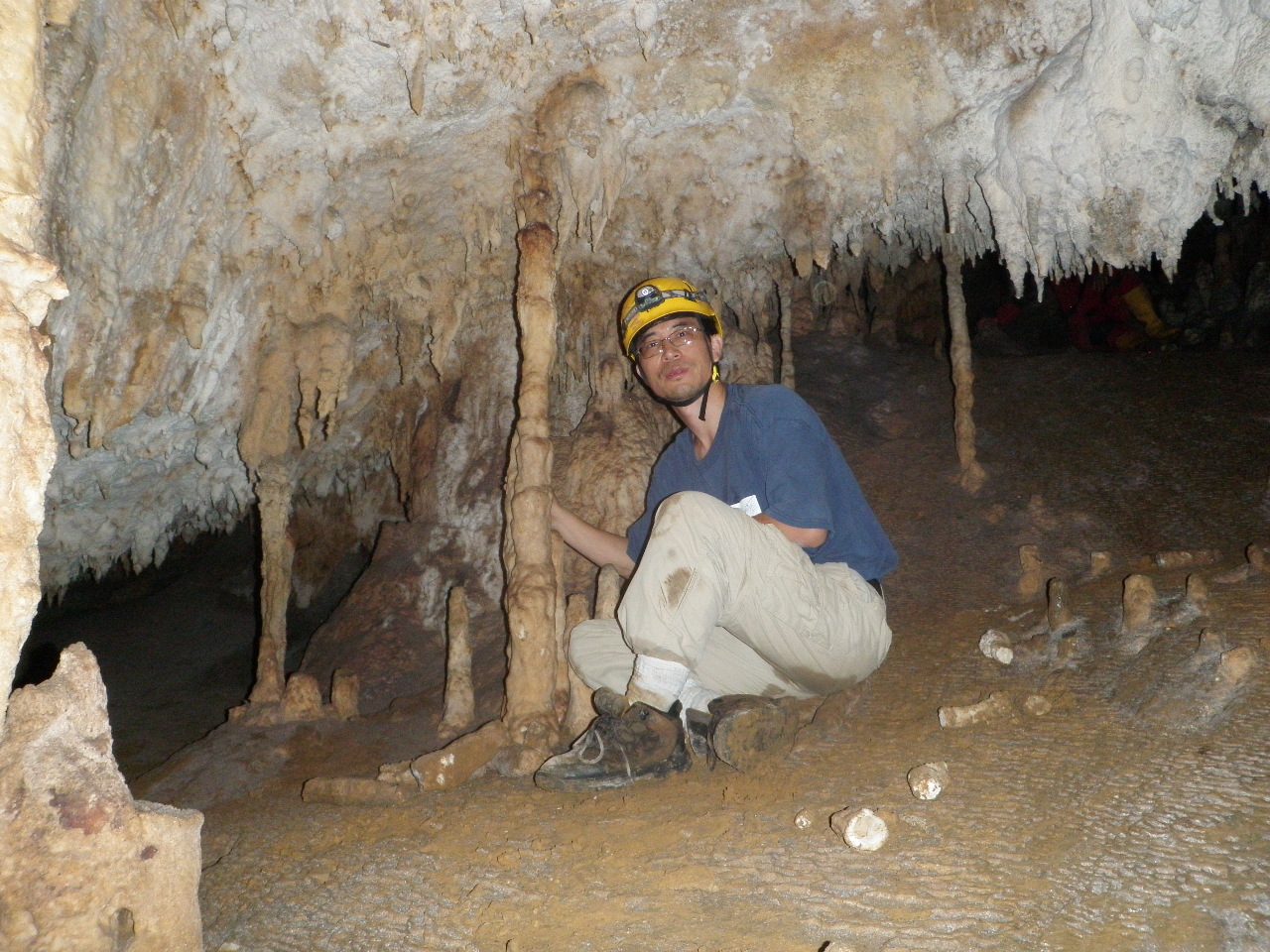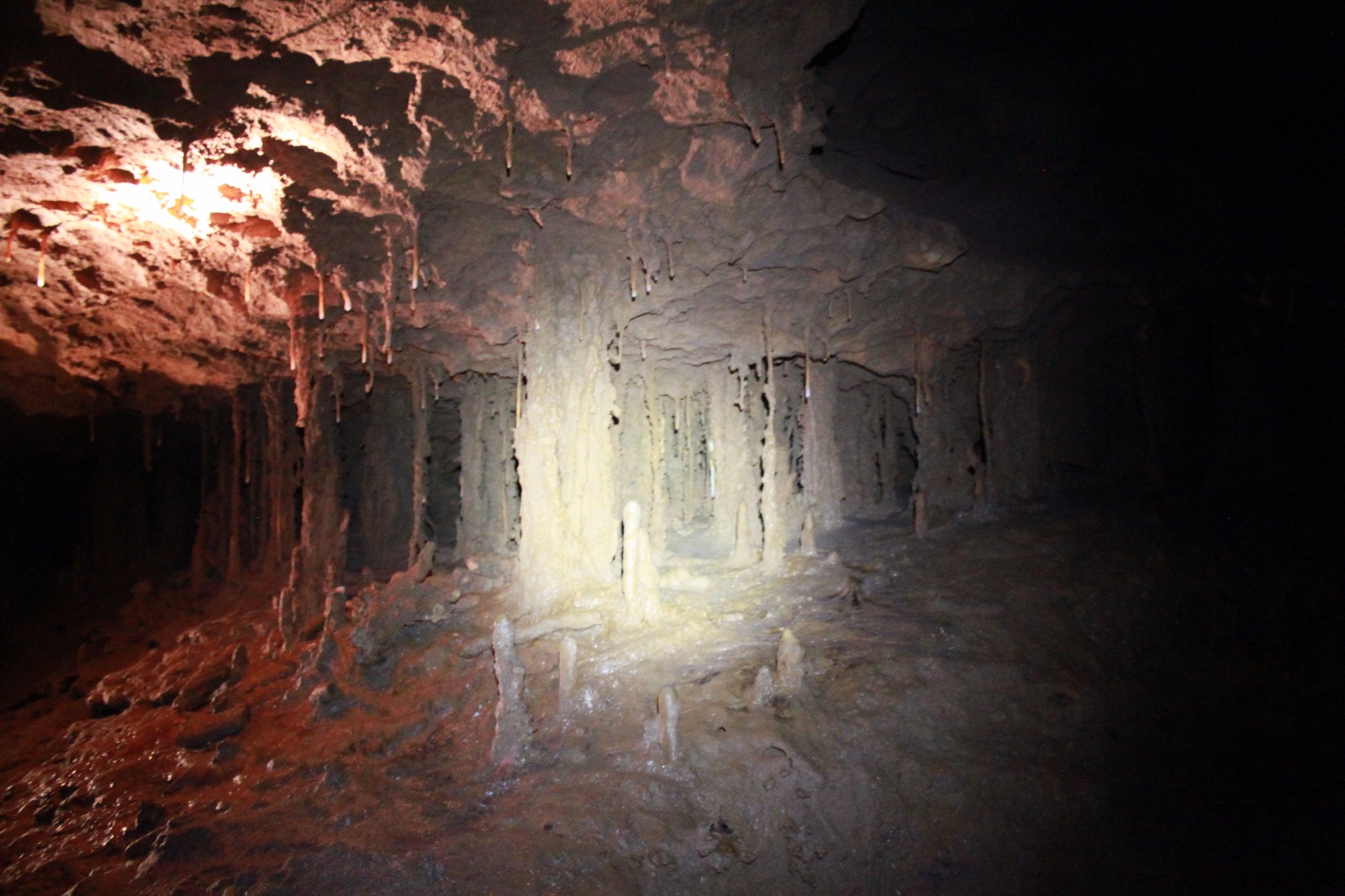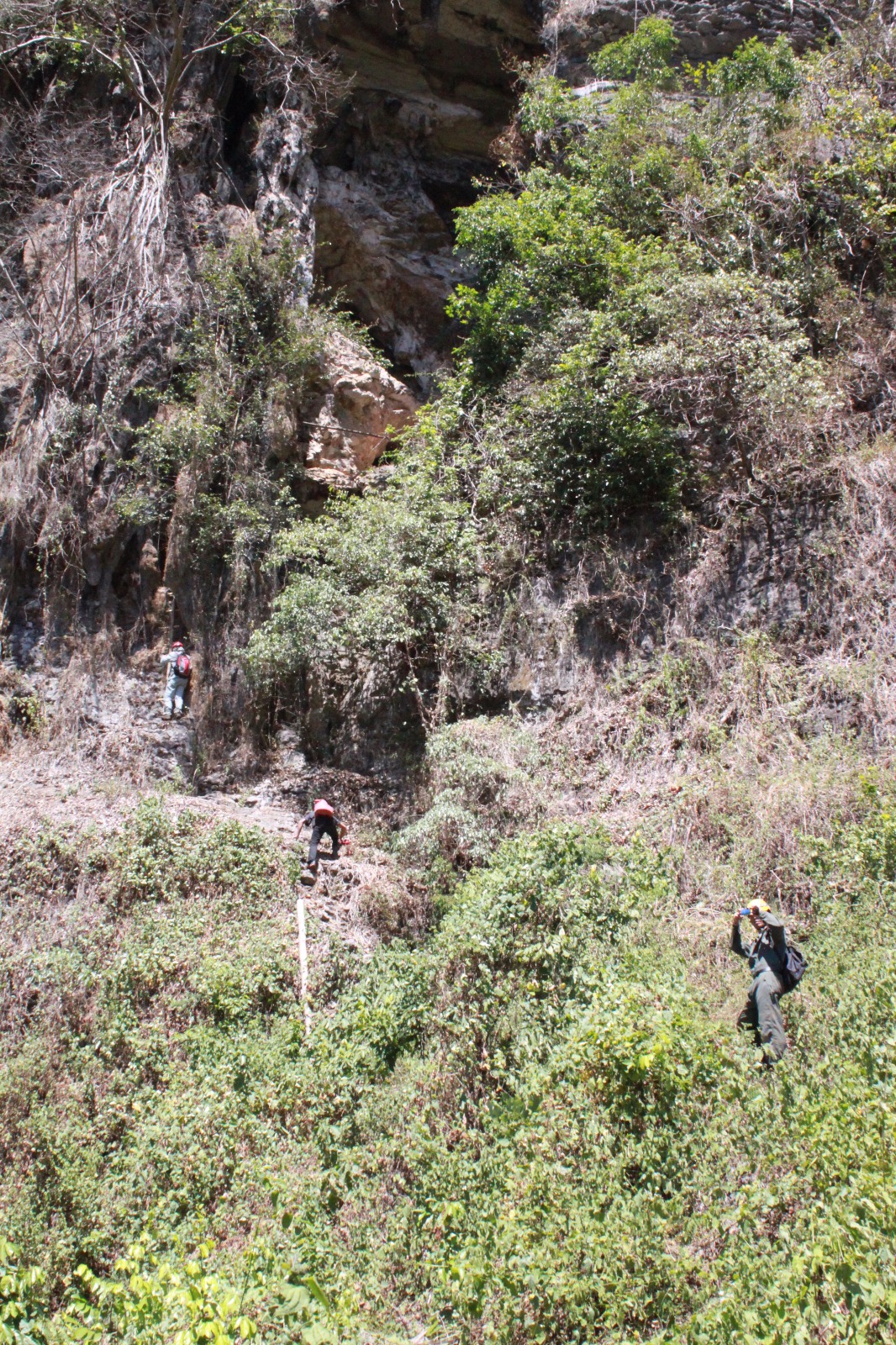In 2010, Assistant Professor Wang Xianfeng and his Brazilian colleague were in a cave deep in the Amazon jungle, wading through waist-deep water in almost complete darkness. The only sources of light came from the head torches mounted on their foreheads.
They were collecting rock samples from caves to study climate changes in the Amazon during the last ice age 21,000 years ago.
Asst. Prof Wang was leading the way, when his colleague spotted something up ahead and told him to stop.

“I was laughing. I thought he was kidding with me as that’s what we often do to boost morale on field trips,” Asst. Prof Wang said. He waded on. “But my colleague told me to stop again, and this time I could sense he was serious. I immediately stopped and asked him what had happened.”
It turned out to be no laughing matter, as Asst. Prof Wang’s colleague had spotted a crocodilian just five metres ahead of them. Very slowly, they backed out of the cave. “Fortunately, it was just a small one,” said Asst. Prof Wang.
This is just one example of the risks that 44-year-old Asst. Prof Wang, a Principal Investigator at the Earth Observatory of Singapore (EOS), has taken in the name of science.
The six years of research he did in the Amazon unveiled the history of rainfall in the region. It also confirmed the theory that the Amazon was still a tropical rainforest even at the time of the last ice age on Earth.
Asst. Prof Wang’s findings were published in Nature, a high-impact scientific journal, in January 2017.

Studying the impact that human society has had on Earth’s climate is the name of Asst. Prof Wang’s game. With climate change being such a broad subject, however, he focuses his research on rainfall in the tropics.
The tropics play an important role in the way water cycles through the Earth, as they contain most of the world’s oceans. But why narrow the focus on rainfall? Asst. Prof Wang explains that rainfall plays a very important role in human society.
“Dry weather could affect agriculture. In Southeast Asia, farmers may not be able to harvest much rice and prices will be affected. For us in Singapore, we import rice from Thailand and Vietnam, so if the price of rice changes, our lives may also be affected.”
Asst. Prof Wang explains that studying the past is key to understanding what might happen in the future.
“Just as we study history so that we can learn lessons from it and serve our community better, this is similar,” Asst. Prof Wang said. “We study the history of climate change so we will know more about what might happen in the future.”
In Asst. Prof Wang’s field of study, however, history takes on a whole different meaning. He studies the history of Earth’s climate dating back hundreds of thousands of years.
“By studying weather changes over a long period of time, scientists may be able to make projections about the future," Asst. Prof Wang explained.

Asst. Prof Wang conducts his studies primarily using rocks. He considers rocks to be Earth’s natural historical archives. “We study rock’s properties and chemical compositions in order to try and piece together historical temperature and rainfall pattern.”
Asst. Prof Wang often works with limestone, which is most commonly found in caves. “When we study rocks, there are two basic pieces of information we need to know – how old the rocks are, and whatever climatic information we can get, like temperature and precipitation.”
To obtain the information, Asst. Prof Wang uses a technique which was developed at EOS, called radiometric dating. It involves a few micrograms of rock samples, and a million-dollar machine called a mass spectrometer. The one he uses is the size of a small car.
The mass spectrometer counts the number of atoms in the rock, a process which involves a rock sample being passed through a plasma solution with temperatures up to 8,000 degrees Celsius. This process separates the ions from each other so that Asst. Prof Wang is then able to determine the age of the rock by measuring the atoms.
Through natural processes like rainfall, oxygen isotopes found in the rocks can also separate from each other and take on different values. These tiny differences allow Asst. Prof Wang to study how much rainfall was in a region.

Asst. Prof Wang cuts, polishes, and drills the rock samples to obtain small amounts of powder to be passed through the mass spectrometer. He painstakingly collected these rocks from all over the world. This part, he says, is where the work gets “really fun.”
“I was born in the countryside, so I guess I have always like the outdoors and wanted to be an adventurer,” says Asst. Prof Wang, who comes from Anhui province in China.
Indeed, from mountain ranges in Southeast Asia, to rainforests in South America, to deserts in China and the United States, Asst. Prof Wang has covered almost every habitat in the world.
Even so, he still harbours hopes of one day boarding a research vessel to study the world’s oceans – something that he has not yet done.
As for now, his ambitions to study the ocean are on hold. Instead, Asst. Prof Wang has an ongoing project studying the history of sea level changes on islands in Indonesia. This time, instead of rocks, he will focus on corals.

With climate change now such a pressing issue, Asst. Prof Wang said it is difficult to balance human interests and conservation of the environment.
“If I’m speaking purely as a scientist and you ask what I think about global warming and the greenhouse emissions, I would just say stop everything,” he said.
“But speaking as an ordinary person, I know it is not that simple because a lot of people still rely on industry for their livelihoods. I’m always thinking – is there a way to balance this? Is there a way to keep the earth habitable and pleasant for everyone?”
“I haven’t found the answer to that yet. It’s very difficult.”